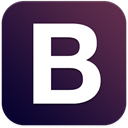Uncovering the Best jQuery TokenInput Alternative for Your Project
Tokeninput is a popular jQuery plugin that simplifies the process of allowing users to select multiple items from a predefined list, utilizing autocompletion as they type. Its intuitive interface, similar to the recipient fields found on platforms like Facebook, has made it a go-to for many developers. However, as web development evolves, so do the tools available. You might be looking for a more modern, feature-rich, or simply different jQuery TokenInput alternative to better suit your current project's needs. This article explores some of the top contenders that offer similar, and often enhanced, functionalities.
Top jQuery TokenInput Alternatives
Whether you're seeking more robust features, better performance, or simply a fresh approach to tag input and multi-selection, these alternatives offer compelling reasons to consider them over the traditional jQuery TokenInput.

Selectize.js
Selectize.js is a powerful and highly customizable jQuery TokenInput alternative, providing a custom

Select2
Select2 is another strong jQuery TokenInput alternative, acting as a jQuery-based replacement for standard select boxes. It's renowned for its support of searching, remote data sets, and infinite scrolling of results, all while maintaining a familiar look and feel. Available for Free on Web and jQuery, it provides a solid foundation for complex selection needs.

tail.select
tail.select offers a pure, vanilla JavaScript solution for creating beautiful, functional, and extensive (Multi) HTML

Bootstrap Multiselect
Bootstrap Multiselect is a jQuery-based plugin designed to offer an intuitive user interface for select inputs with the multiple attribute, serving as an excellent jQuery TokenInput alternative, especially for Bootstrap-integrated projects. It is Free and Open Source, developed for Web and jQuery, providing a straightforward way to handle multiple selections within a Bootstrap environment.
Each of these jQuery TokenInput alternatives brings unique strengths to the table, from robust feature sets and performance optimizations to modern framework compatibility. We encourage you to explore each option further to determine the best fit for your specific development needs and project requirements.